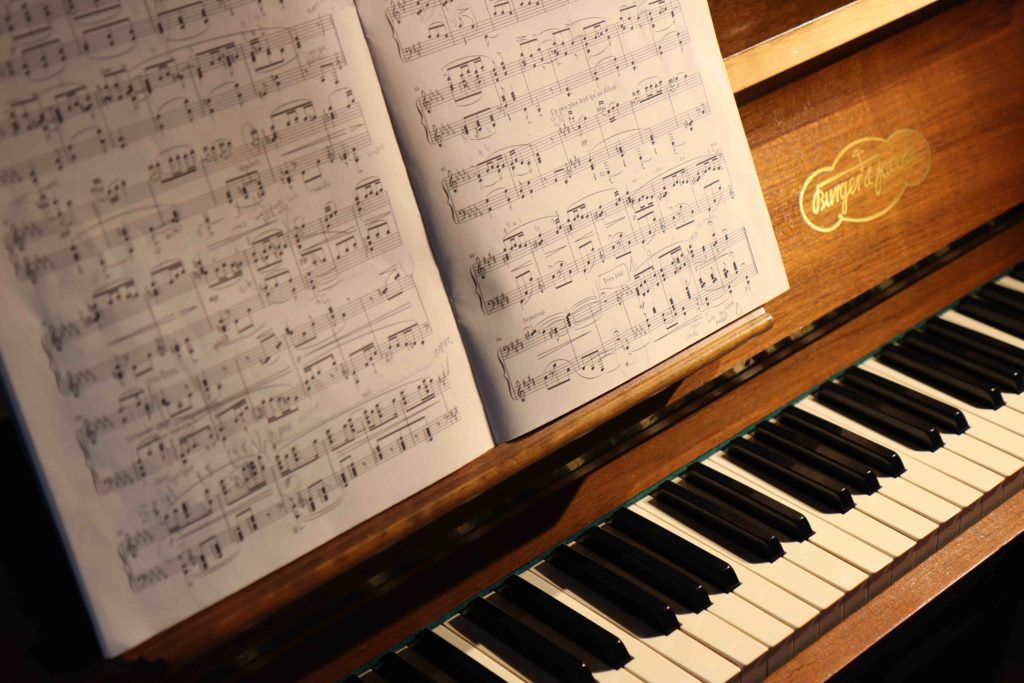
Sight reading… these two words always seem to send students into a stressed frenzy! But just how do we achieve high marks in this often-feared aspect of a music exam or test. It is very important to go into your exam with a plan of how you will approach the sight reading. If you don’t, then you may find that your nerves or anxiety will get the better of you. If you feel you need more help preparing for the exam. then be sure to check out my blog post on dealing with Performance Anxiety.
Before an exam I always give my students a check list to go through in order to approach the sight-reading element. Planning how you will approach this will allow you to prepare and feel confident in the short amount of time that you are given. Our minds can often be frazzled when we are stressed, so we need a process to follow. By following our plan, we can not only execute the sight reading well, but also stay calm (which is vital in an exam!).
So here goes, my eight steps to perfect sight reading…
Tempo
- Tempo literally means ‘speed’. This is important when approaching your new piece of music or sight reading. If a piece needs to be played fast then this will need a you to approach it in a different way than a piece that is to be played slow. Look out for this at the start of the music, this will either be a metronome mark or a performance direction such as Allegro, Largo, Andante etc. Once you know what tempo you need to play the piece in, find a suitable pulse that you will be able to achieve.
Time Signature
- The time signature tells you how many beats you have in a bar. Remember the top number tells you how many beats and the bottom number tells you the type of beat! For example, if we have a 4 at the bottom this will mean crotchets (quarter note’s) or an 8 at the bottom this will mean quavers (eighth note’s) etc. Once you know what you will be counting in this will assist you in the next step! Ensure to emphasise the first beat of each bar to keep you steady.
Rhythm
- This is always the next aspect of sight reading that I encourage my students to look at. Rhythm is the pattern of different note lengths used to create the piece. If a rhythm looks particularly hard then focus on that bar and either tap the rhythm our or sing it in your head. Remember you don’t have long, so making sure you have revised your rhythm patterns before the exam is important.
Key signature
- This is the next important aspect. The key signature tells us which key the piece has been written in. This literally gives you the scale the composer has used to write the piece. This could be F major, G major, E minor etc. Knowing which key your piece is based on will ensure that you have a good foundation for playing the correct notes. Yes, we do still need to have a scan over the notes but if we are, for example, in F major, we will know that every B in the piece will be a B flat, unless otherwise stated!
Notes
- Now is time to look at the notes. Do we have any high or low notes in the piece? If so, what are they? Can you remember the fingerings? This step is vital so that you don’t have a surprise when you get to a note that may take a little longer to figure out! You can also use this opportunity to see if there are any extra accidentals. Perhaps one of the Bb’s has been turned into a B natural? Take a look and be prepared!
Look at the shape of the melody
- Have a look at the general shape, does the melody move up or down? If you were to draw a line over the notes what would that look like? This is very important as it can help you to read the notes quickly! This is a nice thing to practice at home as well… draw a line of any shape and try and improvise a tune in that shape!
Look at the first and last bars
- Starting the piece with confidence and finishing with confidence is vital! Having a good look at these bars will help you begin and end with ease. In an exam you do not have time to focus on every single bar, so prioritising these will give you a good base from which to start and finish.
Keep playing and don’t stop!
- This is probably the most important point. Once you start your sight reading you must not stop. No matter what has come before, approach each new note, rhythm and bar as if nothing has come before it. Don’t let yourself get distracted by mistakes, always keep moving forward!
Now this is obviously quite a lot for you to do in the space of 30 seconds in the exam but this can be practiced. At every practice session why not take out a book of fun songs, studies or anything at all and try and play one of the pieces. The more you run through these steps the quicker you will begin to sight read with confidence!
Let me know how you approach sight reading, I would love to hear you thoughts in the comments!
Happy Practising!
